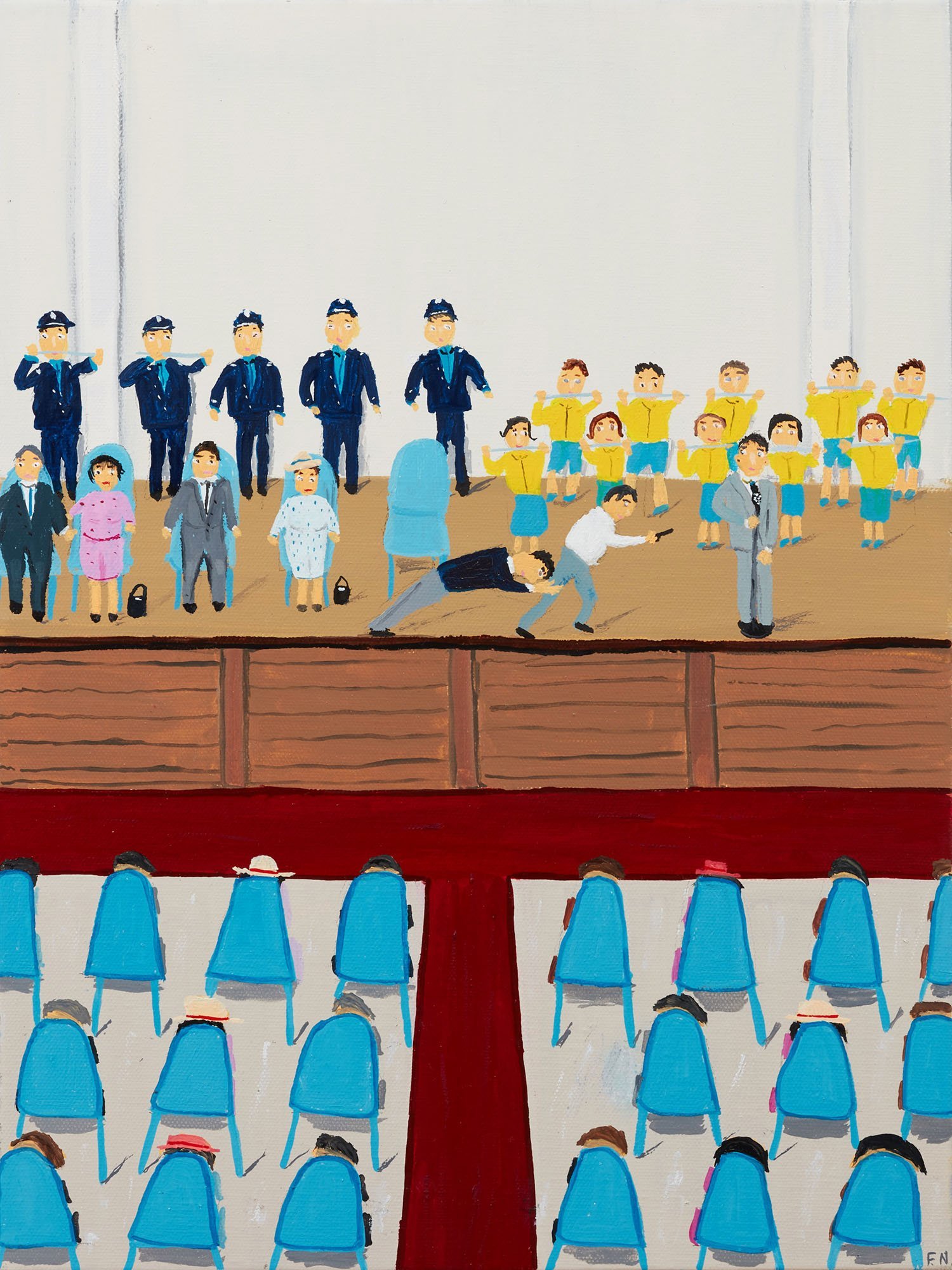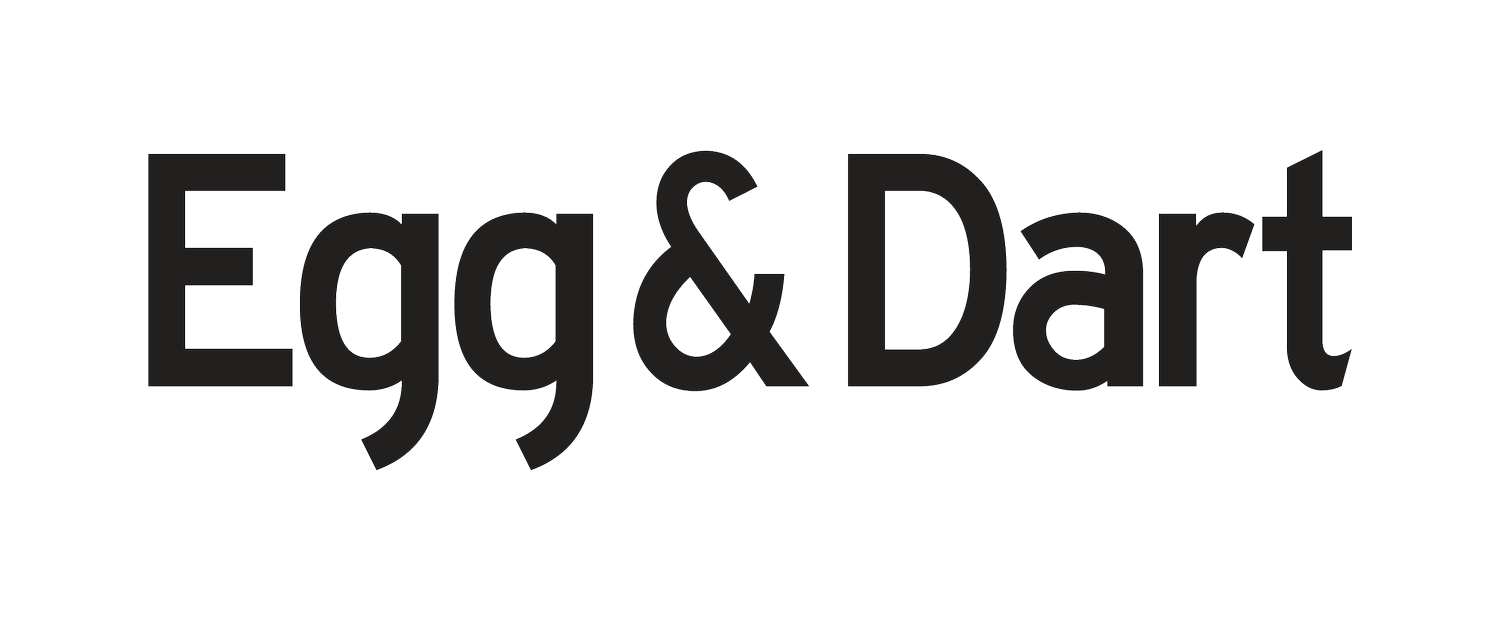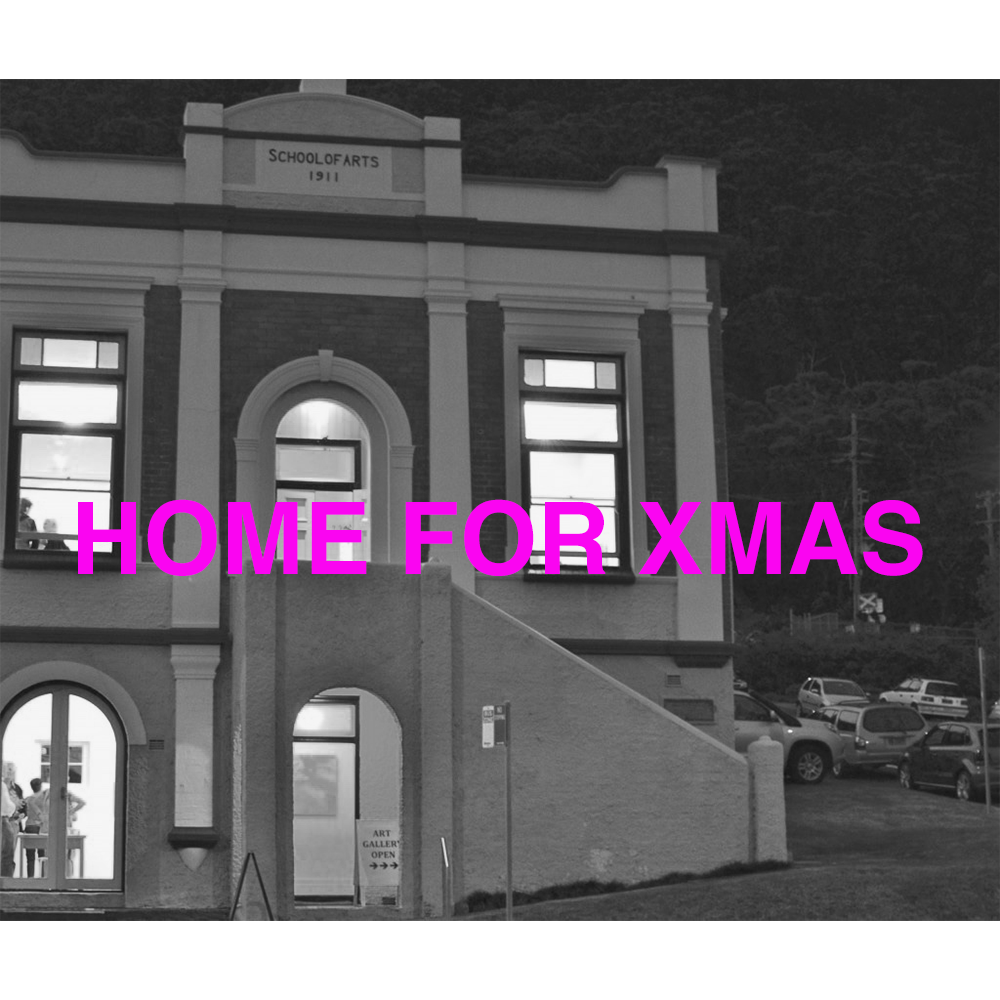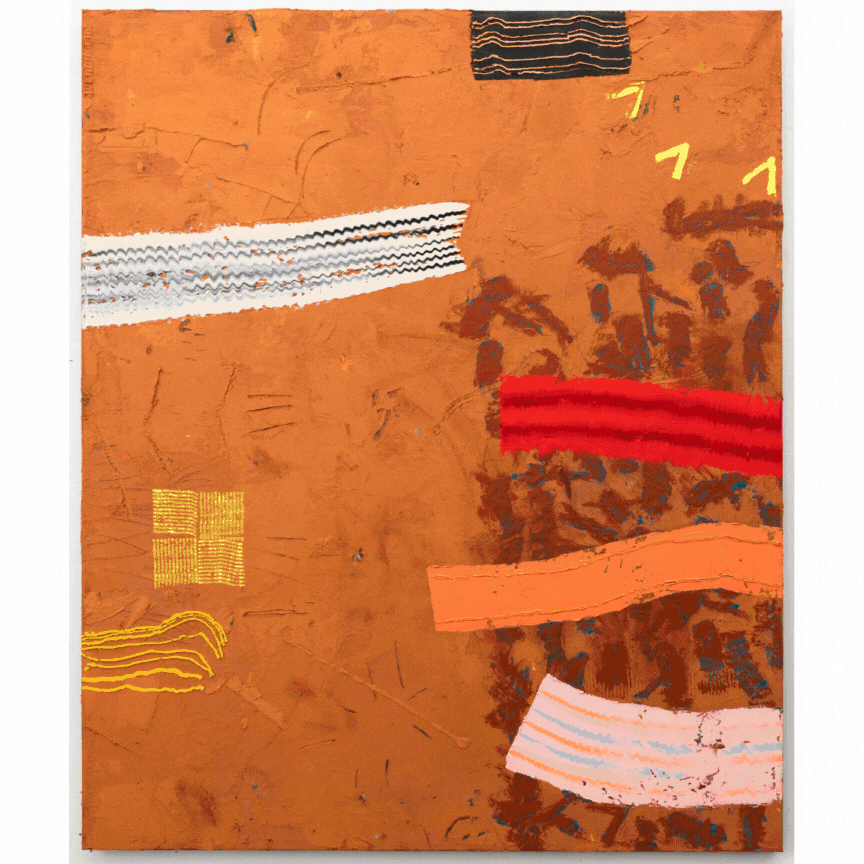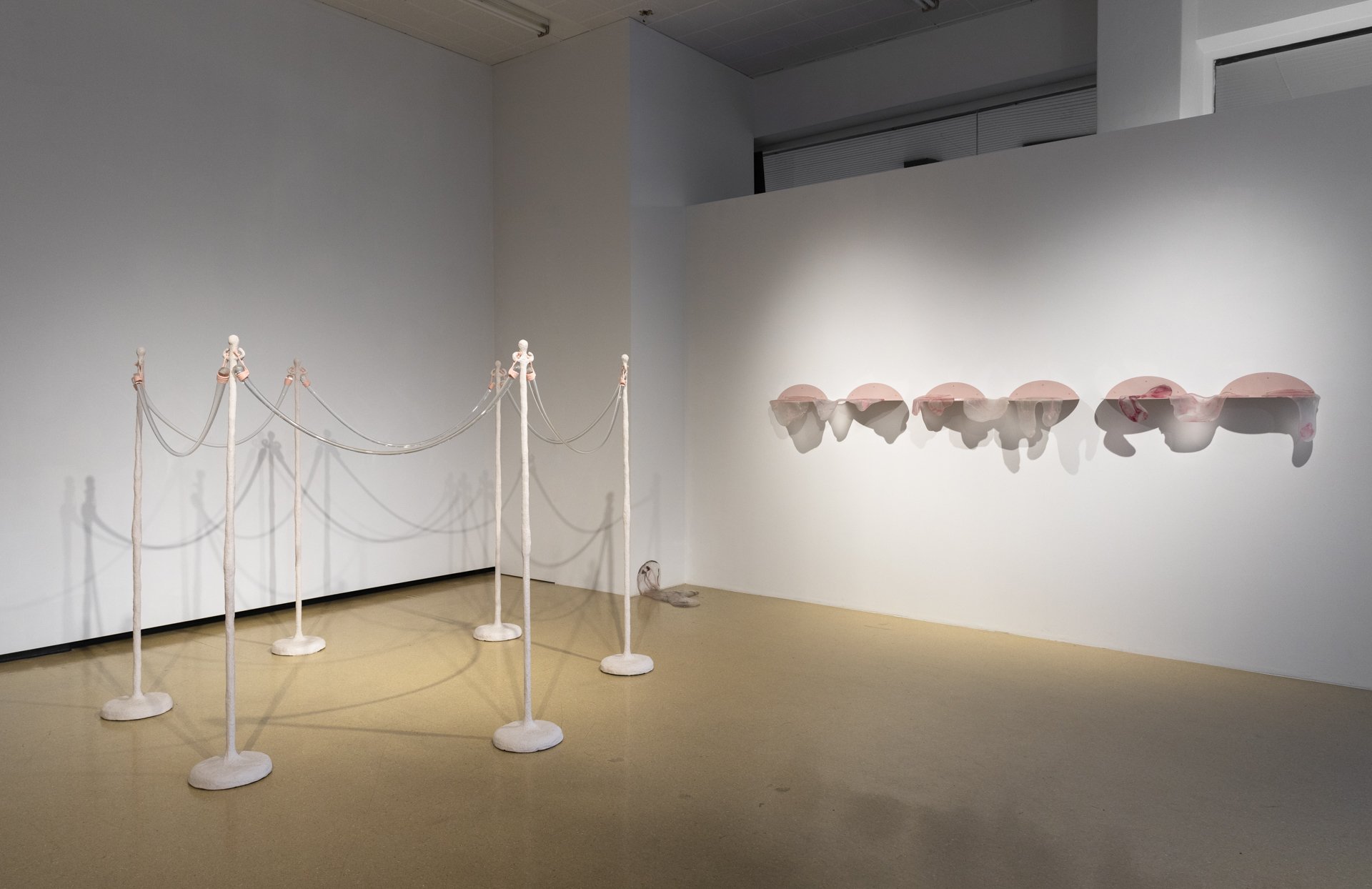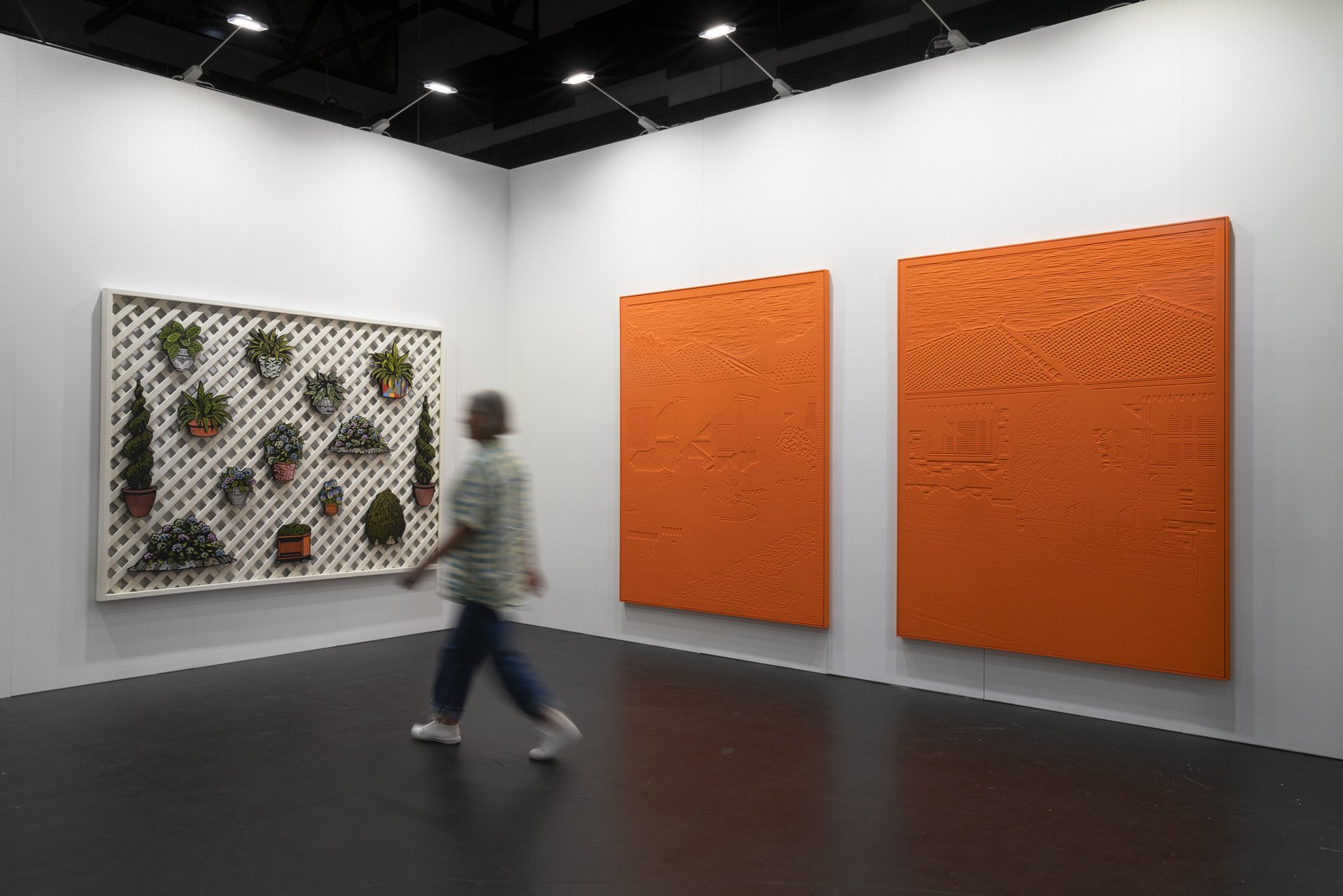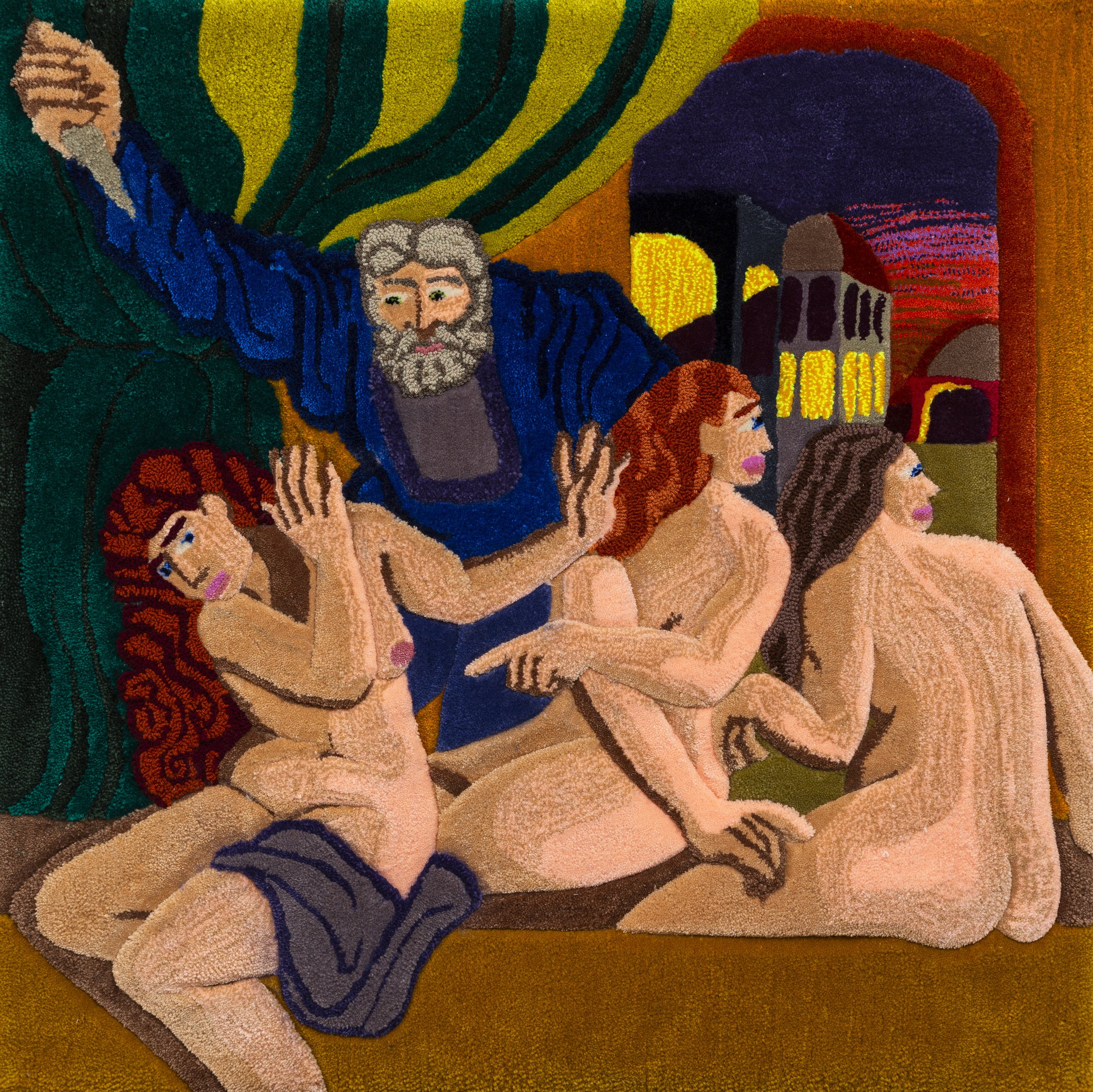
Form over Fallacy, featuring Anna Fiedler, Amber Koroluk-Stephenson, Erin Mison and Ruby Brown.
Form over Fallacy
22 March - 12 April
A group exhibition featuring Anna Fiedler, Amber Koroluk-Stephenson, Erin Mison and Ruby Brown.
Through an intimate exploration of materials, symbols, and mythological narratives, Form over Fallacy presents a collection of works by four women artists who delve into the mysteries of identity, transformation, and the female form.
Join us in the gallery for the opening celebration this Saturday 22 March, 3 pm - 5 pm.

Jackie Cavallaro, 'fish in your pockets' 8 - 15 March, 2025
Opening next week, Jackie Cavallaro, fish in your pockets
Opening celebration on Saturday 8 March, 2-4pm.
Jackie Cavallaro is a multidisciplinary artist based in Dharawal/Wollongong, NSW. Her practice explores drawing, painting and ceramics. Recently her work draws inspiration from coastal landscapes, including grottoes, shell houses, folk art, and historic ceramics of Europe and Japan.
Jackie studied observational drawing and painting at the Julian Ashton Art School. She holds an Advanced Diploma in Fine Art from West Wollongong TAFE and a Bachelor of Fine Arts from the College of Fine Arts, UNSW. She is has been a finalist in the Blake Prize and Hazelhurst Works on Paper and was awarded Bundanon Artist Residency through the Meroogal Womens Art Prize.
Aaron Fell-Fracasso Booth L8, Melbourne Art Fair, 20 - 23 February
Egg & Dart is thrilled to present Aaron Fell-Fracasso at Melbourne Art Fair 2025.
Aaron Fell-Fracasso uses textural and tactile mark-making to create immersive abstract paintings. His process involves rendering, scraping, and concealing layers of paint, revealing complex sensory surfaces that conjure childhood memories and non-linear narratives. In his paintings, Fell-Fracasso explores the interplay between purposeful and playful expressions, employing colour blocking, pattern generation, and direct gestures to guide the viewer across, around, and beyond the picture plane.
In this body of work, the artist’s sensory urge to create tension through contrasting marks and surfaces is palpable. Glossy skins of paint glide across the canvas to meet crusted over excavated aspects of sandy oil-paint remains. Whimsical pigtail motifs sit alongside formal abstract objectives and offer new ways to engage with the contradictions of composition.
The interweaving of personal histories and references to family create visceral moments in Fell-Fracasso's work. The practice of provoking and allowing these moments to occur in his studio has opened up new possibilities in his work, merging the layers of life's complexities with the process of making, without the suspicion of loading meaning into the painting.
In the painting Black Stack, a powerful tower of stacked ribbons trails up, down, and across the left side of the canvas. Lines piped in deep brown and red oxides are smoothed over at different frequencies, vibrating with luster against the gritty undersurface. The artist is reminded of patterns of the Jousta, a Lithuanian woven tie sash he encountered in his family home and on travels back to reconnect with family in Lithuania.
The painting Opa's Annexe invites the viewer into a central cross-section void, where it seems a loss remains. Large portions in three corners of the painting are filled with the artist's recurring textile-esque motif. Vivid orange, apricot, and black oil paint sheen atop a deep rust clay background. The top right corner is spared, only to emerge as a softened breath with fishnet-like material embedding the chalky grounds. In sharing about this work, Fell-Fracasso recalls a memory of his maternal grandfather's caravan annexe; "the fluoro green name tag in the caravan window read, Ian Hedger. He'd assumed his first wife's maiden name to assimilate. My grandfather's birth name was Ervinas Endrulis, but around the caravan park, boat ramp, and pub he was known as Box Head." Much like the artist's memory of his grandfather, who he refers to as an enigma, the painting Opa’s Annexe nourishes the viewer with equal parts freedom and form, allowing their own journey into past and present to merge.
Upon viewing Fell-Fracasso's paintings, it is evident that the application and materiality of his work are rooted in collage, an approach the artist has worked with for many years. Thick worm-like forms are carefully assembled while semi-dried flicks of paint are flung across the canvas. Removed paint skins, along with miscellaneous material studio scraps, are reattached to paintings, guiding a piece-by-piece resolution. Fell-Fracasso's paintings prove that he is forever searching for the perfect sensation to complete a painting.
Aaron Fell-Fracasso lives and works in Dharawal/Wollongong, NSW. He holds a Bachelor of Visual Arts from the University of Wollongong and an Advanced Diploma of Fine Arts from West Wollongong TAFE. He has been a finalist in numerous art prizes and his work is included in the collections of the University of Wollongong and Macquarie University, as well as in numerous private collections.
Egg & Dart Xmas Show at Clifton School of Arts
HOME FOR XMAS
Egg & Dart Xmas Show at Clifton School of Arts
Hannah Barclay, Lee Bethel, Sean Crowley, Amy Cuneo, Ebony Eden, Aaron Fell-Fracasso, Rob Howe, Erin Mison, Darren Munce, Frank Nowlan, Lee Watson, Henry Jock Walker, and friends.
OPENING CELEBRATION: Friday 6 December, 6pm - 9pm.
EXHIBITION DATES: 6 - 8 December, Clifton School of Arts
ROB HOWE | Just Like Stars Shine Over the Wave
ROB HOWE
Just Like Stars Shine Over the Wave
27 Sept - 19 Oct
Opening celebration, Friday 27 September, 6 - 8 pm
“A three week Gang Gang residency on Yuin Country/Cuttagee on the NSW South Coast was a timely opportunity to make work uninterrupted for a sustained period of time. It gave me the space to reflect on my practice and solve problems, both aesthetic and technical, through deep investigation. To do this in a setting that allowed me to de-stress and connect with nature was both a privilege and a blessing. Just Like Stars Shine Over the Wave is a collection of paintings that emerged, freely without agenda.”- Rob Howe
SYDNEY CONTEMPORARY 2024
Sydney Contemporary 2024, Carriageworks, 5 - 8 September
BOOTH J06
Egg & Dart is thrilled to present new work by Hannah Barclay, Aaron Fell-Fracasso, Sean Crowley and Henry Jock Walker at Sydney Contemporary 2024.
SEAN CROWLEY | NEXT TO, BELOW
SEAN CROWLEY | NEXT TO, BELOW
JOIN US ON FRIDAY 26 JULY, 6 - 8 PM, FOR THE OPENING OF NEXT TO, BELOW, BY SEAN CROWLEY
Sean Crowley’s new works are a process of in-situ discovery, made almost entirely on-site in the gardens of friends and family. The size mirrors the expansiveness of his subject, which he essentially used as his studio. With dimensions reaching beyond two metres, the show effectively transforms the gallery into a garden. The new works are oil stick on canvas, continuing the dynamic drawing technique of his pastels. However, this new medium introduces a unique resilience and responsiveness to the canvas. As the artist states, “Drawing is definitely where I come from,” a sentiment reinforced by his recent period at the Royal School of Drawing in London.
Next To, Below navigates the gardens of friends and family, where the artist has felt comfortable moving large canvasses around. There are also rich conceptual parallels between these works and the idea of the garden. Ambiguity of depth and position can be found both in the experience of the garden and in these works. The interplay of planting, structure and movement in a garden responds to the layering capacity of oil sticks. Oil sticks can make gestural marks, ascend into patterns, and mark out edges, but then can be pushed back just like oil paint, erased or smudged into another hue. The oil stick can be dug back into the ground. Private gardens are contained arenas, but they also push outward. Vegetation creeps beyond fence lines, trees cast shadows, and wind chimes are heard beyond the walls. Crowley’s work has similarly been described as expanding beyond the frame. Crowley states, “Someone was saying they are a bit like textiles, and I like that connection in some of them. Maybe that’s connected to just thinking about the physical presence of paintings. I like the idea that they are both alluding to a space but also have a physical presence.”
A two-metre-wide painting requires the artist to move physically, connecting with Crowley’s interest in how we perceive and experience space in motion. “A person‘s perspective in space is always moving – not just the way you move your head around, but that perception of your environment, being in a space. If you’re drawing something in front of you and you have to then move two metres, your relationship changes a lot. Definitely, in doing these larger paintings, there are implications of the way that does impact making a drawing in that space.” The titles insistently lead us back into the paintings, urging us to keep looking. There is a unique synthesis in terms of colour in this collection, so it is surprising to learn from Sean Crowley that, at least initially, the oil stick is applied instinctively. Each hue responds to the one applied previously, which then reacts to the surface treatment used at the start. He states, “If you have a few red colours and then you’re working on a purple ground, and the next painting you have a green background but the same red colours, it works in a refreshed way.”
The works are ablaze with colour that can integrate but also compress space, dropping a filter over the scene. There is a genuine feeling of being in motion, whether shifting position in a fold-up chair or traversing a path. Sean Crowley is interested in how movements in position can lead to adjustments within one work. One divergent interior has as its anchor a centrally placed sideboard described in warm hues like French Vermillion pierced with lime greens. More minor decorative elements are pushed forward. Carved lines on the right suggest a single vanishing point; otherwise, we can feel a reassembling of elements. Postcards and patterns of animals are applied in a more linear manner as if they were attached to the painting. In discussion, Crowley consistently returns to the action of the work. “That process of looking is both a very grounding component, but also, that’s where I find my challenges, where I find the discoveries are made, and where variation comes between the different compositions.”
An elemental approach to space here speaks to Sean Crowley’s earlier experiences as an architect (or perhaps to interests that pre-date any study). He studied and practised in architecture and urban design for a time before gaining a Bachelor of Fine Arts and a Graduate Diploma at the National Art School in Sydney. Considering the work on show here, he speaks of cornerstones of spatial design. “You have a wall that is flat, a door that is a hole or an aperture, then layer on the human elements.” In describing this, Crowley touches on something active and exciting that working on-site offers. These core spatial concerns – where we are in relation and among things – are vital to navigating the significant new works in Next To, Below.
26/6/2024 - 17/8/2024
Egg & Dart has relocated to Shop 2, 175 Keira St, Wollongong, NSW 2500
E info@egganddart.com.au
P +61 402 932 647
LEE BETHEL | KEEPING TIME
LEE BETHEL | KEEPING TIME
Opening Event & Artist Talk Saturday 6 July, 3pm - 5pm
Lee Bethel’s studio is a luminous laboratory in the bush where encaustic wax bubbles away, works in progress are laid out flat and resource piles of torn rag paper are near to hand. For the artist, each exhibition is a record that is being extended and a form of timekeeping. In contrast, the studio is a place of process where forms grow within an elastic quality of time.
Lee Bethel is a prolific mid-career artist and active exhibitor. Recent solo exhibitions include the remarkable Diva (2024) exhibition at Woollahra Gallery which presented her intricate hand-pierced watercolours. A Way With Words (2022) was a solo presentation at Hazelhurst Regional Gallery curated within a “Quintet” of significant artists from the region. In that exhibition, Bethel presented cut paper installations that explored women’s domestic life and craft traditions. In 2023, Bethel was a finalist in the Hazelhurst Art of Paper prize, the Calleen Art Award at Cowra Regional Gallery and the Flow Contemporary Watercolour Prize.
Excerpt from exhibition essay by Melody Willis.
28/6/2024 - 20/7/2024
Egg & Dart has relocated to Shop 2, 175 Keira St, Wollongong, NSW 2500
E info@egganddart.com.au
P +61 402 932 647
DARREN MUNCE | TWITTERING MACHINES
DARREN MUNCE | TWITTERING MACHINES
JOIN US ON FRIDAY 31 MAY, 6 - 8 PM, FOR THE OPENING OF TWITTERING MACHINES BY DARREN MUNCE
Special Event Artist Talk Saturday 1 June, 2.30pm
Darren Munce’s works are an encounter with visual attention and material presence, offering painted surfaces that have been willed into an open resolution. From a distance there is a deep understanding of colour explored through the arrangement of interlocking planes. On approach, great variations of texture gain clarity, the stacked and rolled application of pigment marking the time inherent in making these works. Individual paintings land with a variety of resolutions, dynamic and palpable, ever-shifting or folding through modes.
Excerpt from exhibition essay by Melody Willis.
31/5/2024 - 22/6/2024
Egg & Dart has relocated to Shop 2, 175 Keira St, Wollongong, NSW 2500
E info@egganddart.com.au
P +61 402 932 647
HANNAH BARCLAY | GONE IS THE NIGHT
HANNAH BARCLAY | GONE IS THE NIGHT
JOIN US ON FRIDAY 3 MAY, 6 - 8 PM, FOR THE OPENING OF GONE IS THE NIGHT BY HANNAH BARCLAY
Hannah Barclay is a visual artist based on Dharawal Land on the South Coast of New South Wales. Her latest exhibition Gone Is the Night, is a collection of contemporary ceramic sculptures that are embodied meditations on memory and self. Working through the still of the night, Barclay explores the complexities of agitation and relief, using tone and texture to create tension and soothe the discomfort of her late-night ruminations. Her large bulging, bodily forms shimmer with glaze as they slump over metal plinths, exposing the contradiction of material and form, and the precarious nature of emotion.
3/5/2024 - 25/5/2024
Egg & Dart has relocated to Shop 2, 175 Keira St, Wollongong, NSW 2500
E info@egganddart.com.au
P +61 402 932 647
HENRY JOCK WALKER | ULTRA FLEX
Image credit: Sam Roberts
HENRY JOCK WALKER | ULTRA FLEX
JOIN US ON FRIDAY 5 APRIL, 6 - 8 PM, FOR THE OPENING OF ULTRA FLEX BY HENRY JOCK WALKER
5/4/2024 - 27/4/2024
Egg & Dart has relocated to Shop 2, 175 Keira St, Wollongong, NSW 2500
E info@egganddart.com.au
P +61 402 932 647
AND THEN THERE’S THIS
Will Hilzinger, Silver Lining, 2024, Acrylic, paper, aluminum cans, and glue on Masonite, 122.5 x 91.5 cm
AND THEN THERE’S THIS
JOIN US ON FRIDAY 8 MARCH, 6 - 8 PM, FOR THE OPENING OF AND THEN THERE’S THIS
FEATURING: Isriel Adams, Rosie Deacon, Will Hilzinger, Jackson McLaren and William O’Toole.
8/3/2024 - 30/3/2024
Egg & Dart has relocated to Shop 2, 175 Keira St, Wollongong, NSW 2500
E info@egganddart.com.au
P +61 402 932 647
WHERE’D THE SUMMER GO GROUP SHOW 2024
WHERE’D THE SUMMER GO GROUP SHOW 2024
JOIN US ON FRIDAY 16 February, 6 - 8 PM, FOR THE OPENING OF WHERE’D THE SUMMER GO GROUP SHOW 2024
FEATURING: Hannah Barclay, Lee Bethel, Sean Crowley, Amy Cuneo, Ebony Eden, Aaron Fell-Fracasso, Rob Howe, Mark Merrikin, Erin Mison, Darren Munce, Frank Nowlan, Henry Jock Walker and Leonie Watson.
16/2/2024 - 2/3/2024
Egg & Dart has relocated to Shop 2, 175 Keira St, Wollongong, NSW 2500
E info@egganddart.com.au
P +61 402 932 647
EGG & DART | XMAS SHOW 2023
EGG & DART | XMAS SHOW 2023
JOIN US ON FRIDAY 1 DECEMBER, 6 - 8 PM, FOR THE OPENING OF EGG & DART XMAS SHOW 2023
FEATURING: Hannah Barclay, Lee Bethel, Ruby Brown, Sean Crowley, Amy Cuneo, Arthur Dimitriou, Scott Duncan, Ebony Eden, Aaron Fell-Fracasso, Rob Howe, Jackson McLaren, Mark Merrikin, Erin Mison, Darren Munce, Frank Nowlan, Henry Jock Walker and Christopher Zanko
3/11/2023 - 18/11/2023
Egg & Dart has relocated to Shop 2, 175 Keira St, Wollongong, NSW 2500
E info@egganddart.com.au
P +61 402 932 647
GABRIELLE ADAMIK | THE SOFTENING
Gabrielle Adamik
(left) Breathing Pattern, 2023, 152 x 200 x 200 cm, Hot and kiln formed glass, rope, steel, paper mache, plaster, pva, paint.
(right) You Might Be Holding, 2023, 288 x 34 x 21 cm, Hot and kiln formed glass, steel.
Image by Silversalt Photography
GABRIELLE ADAMIK | THE SOFTENING
JOIN US ON SATURDAY 4 OCTOBER, 3 - 5 PM, FOR THE OPENING OF THE SOFTENING BY GABRIELLE ADAMIK
Gabrielle Adamik stays close to her material. In The Softening, her new glass sculptures offer gravitational droops and cushioned blows. The glass meets with contrasting surfaces – glossy powder coating that softens sharp edges and cement veneer that burnishes away any tight corners. Puddles flood over and catch between shelves that suggest a molten smile or a luxurious drape. Bubbling glass floor pieces suggest mercurial stepping stones, either pathway or portal. The artist describes these as “like drops of water on nasturtiums.” The work luxuriates in the body, with pooling forms and suggestions of blood at the cellular level.
Adamik reflects on her earlier studies in movement, “With the dance training, I think I’m just realising this, but I always start with the body. It is my way in.” She notes the shared language between landscape and the body, both with their shifting terrains, their valleys, crevices and mounds, flows and veins (of gold or blood).
It is the vitality of glass that continues to fascinate the artist. She explains her process:
“Glass and the way I’m approaching it, it’s got this long working time between molten and solid. With metals, you heat metal and immediately it is liquid. Nothing in between. Glass, you have this real moment where you can freeze the movement. It all comes back to movement. A lot of the work is made hot and pushing the glass to capture that moment just before it gives up, in a way, and drops or lets go.”
Much of the new work suggests interrupted flow states, while worm-like objects feel more talismanic and could be comfortably grasped in the hand. These pieces are suspended on a curiously complex plinth constructed by Adamik to demonstrate their downward pull. One technique involves pulling lolly-coloured glass rods in swirls, then breaking it up and throwing it back into the kiln to form puddles, “almost like paintings”. The glass shards float within transparencies that are coaxed into states of becoming – until the artist crash cools it, forcing a dramatic temperature change in the kiln and sudden stasis. The end of the dance.
In her studio, Gabrielle Adamik connects with American sculptor Richard Serra’s scrawled Verb List from 1967, described by Serra as “actions to relate to oneself, material, place and process.” The Verb List is a reminder for Adamik to stay close to material forces rather than reach for metaphor and narrative. Actions we might apply to works in The Softening include:
to stretch, to smear, to modulate,
to grasp, to spill, to bond
of time, of equilibrium, of gravity …
Gabrielle Adamik also suggests a type of self-portraiture is at play in her work as her sculptures explore the qualities of a softening body. But the physicality of working with the hands remains key. As she states, “the material has a pretty loud voice in this work.”
3/11/2023 - 18/11/2023
Egg & Dart has relocated to Shop 2, 175 Keira St, Wollongong, NSW 2500
E info@egganddart.com.au
P +61 402 932 647
ROB HOWE | YOU’VE GOT TO HAVE A FLOWER ON YOUR MIND
Rob Howe, Flower On Your Mind, 2023, Oil on board, framed, 32 x 42.5 cm. Image by Silversalt Photography
ROB HOWE | YOU’VE GOT TO HAVE A FLOWER ON YOUR MIND
JOIN US ON FRIDAY 13 OCTOBER, 6 - 8PM, FOR THE OPENING OF YOU’VE GOT TO HAVE A FLOWER ON YOUR MIND BY ROB HOWE
13/10/2023 - 28/10/2023
Egg & Dart has relocated to Shop 2, 175 Keira St, Wollongong, NSW 2500
E info@egganddart.com.au
P +61 402 932 647
SYDNEY CONTEMPORARY 2023
Christopher Zanko, Sydney Contemporary 2023, Installation View
SYDNEY CONTEMPORARY 2023
At Sydney Contemporary 2023, Chris Zanko presents new pieces on aluminium and his largest hand carved wood-relief works to date in both monochrome and colour. With both new material and scale, Wandering Where elevates the artist’s continuing appraisal and appreciation for Australia’s mid-century housing. An installation of cut-out forms attached to lattice furthers the dialogue between the plan-based format of the house and the vernacular and at times eccentric front yards attached to them.
Funding from the Create NSW Visual Arts Commissioning Program has allowed the Wollongong based artist to research innovative materials and work with new processes. He states: “My subject matter, the context of these mid-century dwellings, is so tied in with industry and manufacturing from the steelworks, the smelting, the foundries. I really wanted to do something with steel or aluminium. It was hard to land on something that was going to have the same amount of detail I create in a relief work.”
Zanko initially talked with foundries before collaborating with a metal finishes company to get the striking result showing at Sydney Contemporary. He began by carving a representation of the blast furnace at Port Kembla Steelworks and then had the work 3D scanned. It was then printed with aluminium in different finishes. The outcome is a solidly sculptural yet pictorial form in a pressed metal edition of three. The manufacturing process is an invigorating synthesis of material and context and an exciting progression. As he reflects, “The blast furnace is a place where workers are manufacturing multiples but on a mass scale. I wanted to play a bit further with that idea of the multiple. And of course, the steelworks is the centre of production, tied to the ongoing work that I have made looking at housing in Wollongong.”
Expanding on this are the large monochrome wall works commenced in 2022. These sustain the detail of the artist’s full-colour pieces but pare it back to one confidently selected hue. They offer an assured textural surface where we can explore variations of pattern and legibility in the image. The monochrome Flashe vinyl orange floods across the wood carving in a colour that suggests contemporary life, signage, high viz and car finishes. Zanko describes the colour as like the glow of the steelworks at night or the vivid silhouette of a red brick house burnt to the retina on a bright summer day.
Cohabiting with the aluminium and monochrome works are wood cut-outs installed on lattice that explore an incidental array of topiary, plant pots and garden objects. Zanko has an ongoing interest in the way the front yard offers a setting for individual design expression. The installation suggests open-ended rearrangements, like ad hoc extensions made to homes and the interaction between formal and informal design expression.
Prior to the lattice installation, the artist had worked with found and stacked breezeblocks, wallpaper and garden fountains in gallery spaces. The larger wall pieces and ongoing installation are all part of Zanko’s pursuit to make even more immersive work. A bigger scale allows him to embed a lot more information in the scene, whether it be the tiles, folds in curtains, driveways or the addition of decorative borders that invite the viewer to step across into this parallel space. The cut-outs inversely bring elements out into the gallery space in the looser way we might need to employ navigating sculptures or plant pots along a garden path.
The aluminium edition, monochromes and cut pieces are significant expansions in Chris Zanko’s loving appreciation of mid-century Australian homes. It has been a wildly prodigious development since the artist’s first solo exhibition at the Egg & Dart, Wollongong in 2017. A recent solo show in the heart of Tokyo in 2022 (Laidbug, Shibuya-ka) brought the artist closer to his enduring interest in Japanese woodblock print methods. Recent media has given further vivid context to his practice, including a great documentary piece for the ABC Art Works program. There have also been articles in Art Collector Magazine. Significantly, in 2022 he was a finalist in the Sulman Prize (AGNSW) and in the Hazelhurst Works on Paper Prize. In 2021 there was a major commission for the Rose Seidler House 70 th Anniversary. That work resides in the Museums of History NSW Collection, with Chris Zanko’s work also found in the collections of the Wollongong Art Gallery and University of Wollongong.
Words - Melody Willis
This project is supported by the NSW Government through Create NSW.
7/09/2023 - 10/09/2023
Egg & Dart has relocated to Shop 2, 175 Keira St, Wollongong, NSW 2500
E info@egganddart.com.au
P +61 402 932 647
ERIN MISON | SWIMMING IN STRANGE WATERS
Erin Mison, Porcelain And Crumbs, 2023, Hand tufted wool and acrylic yarn on cotton monks cloth, 95 x 95 cm. Image by Silversalt Photography
ERIN MISON | SWIMMING IN STRANGE WATERS
JOIN US ON FRIDAY 25 AUGUST, 6 - 8PM, FOR THE OPENING OF SWIMMING IN STRANGE WATERS BY ERIN MISON
In Swimming In Strange Waters, Erin Mison challenges the warm tactility of hand-loomed rugs with her ambiguous and contentious scenarios. The softness of the rug contrasts with the fraught encounters pictured, where bodies embrace or are possibly in restraint. There is rarely a passive or seductive gaze out to the viewer, and colour selection (including hints of red stitched into pupils) suggests complex intentions. Both intimate and resilient, the hand-loomed rug is an object that can be folded and passed on generationally. It is a form that traditionally carried images of female seduction or historical scenes. Mison plays with this format to link pervasive mythologies and contemporary intimacies.
An academic psychologist as well as an artist, Erin Mison is intrigued by human behaviour: “It started with me wanting to take these themes, hold a mirror up to the viewer and say that whether they are Greek myths, Christian stories or whatever else, nothing has changed. There are reasons these stories continue to resonate. If they were so far out, we would have moved on to another story, another Grimm Brothers fairytale, but we don’t.”
Mison starts by drawing. “And once I feel connected to something, wedded to an idea and it won’t get out of my head, I will sketch it on the fabric.”
Tufting involves working in reverse on the surface, shining a light through the cloth as a guide while the image develops. Working from front to back initially created distortions in the figures and she has expanded on this as a sinuous stylistic element where bodies follow their own curves. The cast light is an essential tool for making a tufted rug but interestingly it also finds its way into Mison’s work as a visual metaphor. Light cast from a lamp acts as another form of gaze, whether through a keyhole or onto an otherwise shrouded scene. In the works that more directly engage with mythologies, the light appears through archways or suggests the glow of a candle. It is a light that exposes unresolved behaviours or even the shadow self, a concept the psychoanalyst Carl Jung developed and that Mison has a comprehensive understanding of.
There is a fascinating ambiguity in the work as these encounters between bodies remain unresolved. Mison acknowledges, “There are a lot of women in my work. They are never a victim, although potentially a victim of circumstance. That to me is a very powerful difference, in their nudity, their ownership of it.” The artist is deeply engaged on matters of human behaviour and the enduring nature of stories. As example, she notes the varied historical depictions of Danaë receiving Zeus, who appears uninvited as a shower of gold. In contrast to the receptive or even ecstatic interpretations of Rembrandt and Titian, the female Mannerist artist Artemisia Gentileschi paints Danaë grimacing, crossing her legs, her glance to the heavens suggesting resistance or at least uncertainty. This ambiguity is embedded in Erin Mison’s treatment of figures which is then further activated by how each viewer interprets the bodies, their expressions, the direction of their eyes.
Erin Mison’s first show at The Egg & Dart Gallery explores a shift from domestic interiors to her own adaptive takes on classical painting. The textural warmth of Mison’s hand-tufted rugs offer comfort while we consider the complex echoes of myth and story in contemporary life.
25/08/2023 - 9/09/2023
Egg & Dart has relocated to Shop 2, 175 Keira St, Wollongong, NSW 2500
E info@egganddart.com.au
P +61 402 932 647
Spring 1883 Art Fair
Egg & Dart
Spring 1883 Art Fair
Suite 220, The Hotel Windsor, Melbourne from 9 –12. August, 2023.
Presenting Gabrielle Adamik, Scott Duncan, Aaron Fell-Fracasso, Erin Mison, Darren Munce, Henry Jock Walker and Christopher Zanko.
SCOTT DUNCAN | SUMMERTIME BLUES
Scott Duncan, Summertime Blues, 2023, Raku Clay, Underglaze, Glazes, Acrylic, 77 x 50 x 48 cm. Image by Silversalt Photography
SCOTT DUNCAN | SUMMERTIME BLUES
JOIN US ON FRIDAY 28 JULY, 6 - 8PM, FOR THE OPENING OF SUMMERTIME BLUES BY SCOTT DUNCAN
We are looking at a new major work in Scott Duncan’s studio. It has the appearance of a mid-century vessel emerging from what feels like chipped away concrete aggregate. This chunk is surfaced with what appears to be small tiles from the weathered frontage of an old corner store. As the artist says, “I want it to look like an excavation of a milk bar from the 70s.” But while the piece suggests an amalgam of materials, these are wholly ceramic objects with material and conceptual integrity. Darker glazed patches of ceramic mimic the aggregate and the small tiles are formed by a pattern pressed into the clay from the base of a bread crate.
As he assesses the qualities of the newly fired object, Scott Duncan states, ”I’m not a tromp-l’oeil artist.” His core objective is to transfer idea to form, later summarising that, “I made this because I wanted to see what it looked like.” Consistent with this, Scott Duncan talks about figuring out how to make things as he is making them. The ideas are generated in clay with very little drawing. In the place of drawing is an experimental approach to tools. “Bits of stuff from the kitchen, dome moulds, bevelled edges. I used wedges of balsa to imprint those patterns,” pointing to the clay circular decoration on one of his iconic bird vessels (which another visitor described as feeling like embossed leather bags). These adaptive tools allow him to explorequalities which are not usually found in clay. “I want to explore added texture – texture that does not belong in traditional pottery.”
Another development is the artist’s use of text fragments to spark memories or unearth histories. The wall works “Hot Dog” and “Chewie” loop around through word definitions, graphic design memories and contrasting textures. Circling this is wit and nostalgia for forms that fold in through generations. Like the feeling of chewing gum in your mouth, then spat out and deposited on a surface, Scott Duncan’s work is a textural, sensory realm hardened into ceramic form.
Summertime Blues is Scott Duncan’s second solo show at The Egg & Dart. With an ArtBank commission and work in private collections, this exciting presentation of new work follows on from an active period of group exhibitions including a showing at Sydney Contemporary in 2022. Scott Duncan will also be presenting work at the Spring1883 Art Fair, Melbourne in August 2023.
28/07/2023 - 19/08/2023
Egg & Dart has relocated to Shop 2, 175 Keira St, Wollongong, NSW 2500
E info@egganddart.com.au
P +61 402 932 647
GROUP SHOW | INSIDE
Ebony Eden, Euphorbia Boogie, 2023. Acrylic on board 40.5 x 30.5 cm.
GROUP SHOW | INSIDE
JOIN US ON FRIDAY 23 JUNE, 6 - 8PM, FOR THE OPENING OF INSIDE FEATURING SEAN CROWLEY, AMY CUNEO, EBONY EDEN, ROB HOWE AND MARK MERRIKIN
23/06/2023 - 15/07/2023
Egg & Dart has relocated to Shop 2, 175 Keira St, Wollongong, NSW 2500
E info@egganddart.com.au
P +61 402 932 647
AARON FELL FRACASSO | FORMWORK
Aaaron Fell Fracasso, Yellow Ochre Rendered on Blue, 2023. Oil, Sand and Acrylic on board 182 x 150 cm.
AARON FELL FRACASSO | FORMWORK
JOIN US ON FRIDAY 19 MAY, 6 - 8PM, FOR THE OPENING OF FORMWORK BY AARON FELL FRACASSO.
In the studio Aaron Fell-Fracasso has a range of tools to get paint onto a surface. There are wide edged trowels, screeding brushes with soft bristles and concrete finishing knives. Oil paint has been poured into a stack of cartridges ready to be loaded into a caulking gun. He can use this to quickly apply vibrant colour to a trowel or extrude it straight onto the work as a wormy line. The method means an idea becomes action almost immediately. This is abstraction that repurposes construction methods, holding within it the correlations between physical labouring and the artist’s studio.
It's there in the title FORM WORK. In construction this refers to the mould used in the making of a concrete slab or wall. When set, this mould or form is then removed though its trace may remain in surface indentations and texture. Much of this labour is about covering up, correcting, smoothing or re-surfacing. For Fell-Fracasso, these techniques become distinct moves left as a gutsy palimpsest of his actions. Squidgy generous slabs of colour are troweled on, broomed, smeared and smudged. The act becomes the painting and the painting is a record.
Ideas around crafting and labour are critical to Fell-Fracasso. Growing up in an industrial Wollongong, the artist had a varied education in the understanding of materials. As an art school student, he worked nights on track maintenance hauling sleepers and welding, and later construction. The worlds of labouring and visual art presented as counterforces but overlapped in terms of material possibilities. This knowledge presents itself in his language of marks and the constructed quality of the frames. The texture of his paintings has departed from the gloss of oil and is more akin to that of a rendered wall. Paint is heavily mixed with sand and as the artist describes, “It’s not buttery anymore. It’s more like butter with sugar in it.” Rather than creating a matte surface, it feels like light is bouncing off particles, bringing a fragmented vibrancy to the hues. He sees his wild palette as “more charged, electric, caustic,” applying colours that “go against an earthy base.”
The dimensions of the frame (about the width his outstretched arms might reach) suggests a wall marked by time and intervention. It has been a recent move on some works to curb the expanse of colour through the application of a border. This is informally squeezed out through a caulking gun. It is a humorous capping off that makes correlations between the finished edge around a slab of concrete and the decoration on a cake.
Continuing this, construction material has been brought in. Reinforcement mesh used in concrete slabs is exposed here as a grid that extends the dimensions of a painting. A found timber plank scuffed by use attaches neatly to another major work. Given Fell-Fracasso’s background and the industrial context of Wollongong, it is a development that feels quite personal. The desire to embed evidence of labour in a painting could be seen as the artist reckoning with his context and work history, but this structural quality is then radically paired with glorious, unexpected colour dynamics and impulsive marks.
In galleries and magazines, art can present as a magic trick. The adjustments and deliberations attached to making something then disappear in the move from studio to exhibition. Countering this, Fell-Fracasso offers inscriptions of a painting’s history. FORM WORK is a record of the artist’s time spent at this surface, delivering immersive and sensory qualities through a diversely acquired understanding of materials.
Melody Willis
19/05/2023 - 17/06/2023
Egg & Dart has relocated to Shop 2, 175 Keira St, Wollongong, NSW 2500
E info@egganddart.com.au
P +61 402 932 647
CHRISTOPHER ZANKO | DOWNSHIFTER
Christopher Zanko, DS1 (Bellambi Red Brick And Awnings) 2023. Acrylic on hand carved wood, 145 x 122 cm.
CHRISTOPHER ZANKO | DOWNSHIFTER
JOIN US ON FRIDAY 21 APRIL, 6 - 8PM, FOR THE OPENING OF DOWNSHIFTER BY CHRISTOPHER ZANKO.
Based on an unwritten cultural narrative, Christopher Zanko’s latest exhibition Downshifter captures both the similitude and distinctive character of suburban landscapes, particularly within the Greater Illawarra. Referencing both larger cultural histories of the region and everyday Australian experiences, Downshifter presents spatially nuanced explorations of post-war suburban vernacular, with reference to more recent patterns of urban migration. The show includes 15 works and maintains Zanko’s signature emphasis on the stylistic elements of mid-century Australian domesticity, this time with an elevated sense of sentimental permanency.
Inverting familiar tropes of the suburban landscape as peripheral and derivative, Zanko skilfully comments on the naivety of viewing cities as bastions for creativity and individuality. Suburban landscapes are witnessing a cultural renaissance; recent patterns of migration have triggered a literal ‘downshift’ of people from cities to regional areas, and pandemic-related lockdowns also inspired downshifts in both lifestyle and routine. Zanko’s acute awareness of how this suburban sprawl and subsequent gentrification affects the cultural heritage of the Illawarra has created an urgency for its preservation. Tensions surrounding what constitutes as heritage and what deserves protection mean that many of the subjects featured in Zanko’s artworks will be preserved only through his woodblock carvings.
There exists an inherent irony in Zanko’s oeuvre – his process is technically demanding, laborious and requires precision, but the subjects featured in his artworks are often produced in abundance. This polarity helps Zanko elevate the status of his subjects; although there exists opportunity to create infinite copies of each artwork, Zanko makes the conscious decision to keep his output to a minimum, highlighting each piece’s individuality.
Downshifter is underpinned by a deeper personal narrative; Zanko expresses a fondness for simpler times in his adolescence, articulated through both subject matter and composition. There is a softness to the works, aesthetic and conceptual, that implies a sense of tender longing. Shadows play an important compositional role; the image, obscured, invites viewers in for interpretation. The artworks are not intended to be portraits of specific sites, but rather layered representations of cultural history.
Zanko describes his recent solo exhibition in Tokyo as a formative experience in his career which empowered his identity as an artist and solidified his process. A mysterious sense of ritual is found throughout Downshifter, influenced by both personal and philosophical connections to Japan. There is a pleasure in the process; carvings are rhythmic and precise, triggering a downshift in both the artist and his audience to a meditative state.
- Molly Lasker
21/04/2023 - 13/05/2023
Egg & Dart has relocated to Shop 2, 175 Keira St, Wollongong, NSW 2500
E info@egganddart.com.au
P +61 402 932 647

MARK BO CHU | SAY CHEESE
Mark Bo Chu, Inside Chill, 2022. Acrylic on canvas, 35.5 x 45.5 cm.
MARK BO CHU | SAY CHEESE
JOIN US ON FRIDAY 31 MARCH, 6 - 8PM, FOR THE OPENING OF SAY CHEESE BY MARK BO CHU.
In SAY CHEESE, Mark Chu shows how painting can monumentalise the fleeting moment. A photo may act as a memory jolt for an event, but a painting reconfigures this through other filters. Improvised gatherings of people become sculptural and immortal, fixed, canon. Chu’s works locate the compositional wildness of incidental images. A raised elbow becomes an elegant framing device, and a smoke plume serves as a perfect division across a canvas.
Mark Chu’s general project is a response to contemporary urban life through brush-marked patches and layers of colour. Within this broad ambit, the artist will generate a temporary idea to bring some containment to his interests. In SAY CHEESE the concept took shape when Chu asked to paint a friend’s photograph from a new year’s party. This then became a broader social media call-out to share group photographs of memorable gatherings.
Chu scales up of these images from the dimensions of a tiny screen to the tactile grandeur of canvas. We see the recognisable group portrait, its dimensions contingent on the scope and tilt of the camera and the way this pulls figures together in an informal arrangement. The bundle of humans creates a dynamic edge, a clumping of clothed bodies drawn in through arms, embracing or posing with hand signs, faces grinning or grimacing.
Time is at work in these paintings. There is the date of the photograph and the ever- receding memory of the event it seeks to capture. Countering this distance is the super- quick digital sharing that delivers the image to the artist. Then there is the time taken by Mark Chu to make the work – a contemplative act that fixes these animated poses into new dimensions. Time is also evident on the surface of the canvas. Many of his paintings began as palettes for earlier works. This allows for transparency and optical colour mixing, giving his populated spaces a roughed up and integrated quality.
Let’s consider all the looking and reflection going on in the exhibition. It may be self-evident but it is quite a crowd! First, we are viewers looking at paintings of people who are generally looking back at us. The paintings have been made by the artist viewing informal photographs sent to him from many locations by a range of people. The artist has then selected based on what these informal pictures offer for him visually. Behind the artworks are conversations between Mark Chu and his subjects as he continues the dialogue, often internationally and sometimes with people he has not physically met.
Mark Chu talks about the qualities that draw him to certain photographs and what they offer for painting. There are the shapes of skin blocks, how they differ from the bulk of clothing. Some paintings have a quality of flash photography, suggesting an earlier era with light bouncing off briefly illuminated apartment walls. The tender treatment and warmth of these paintings and the attention they bring to human connection counters any simple critique of social media. Mobile phones are just part of the scenery, albeit a thing that acknowledges the way digital networks have been integral to this show.
There is a dynamic line that can be drawn through Mark Chu’s far-reaching practise. From concert performer to writer, food critic and painter, the drive is for creative inquiry for all the senses. His various modes of work involve testing, pattern and variation where he assigns himself tasks to contain expansive interests. SAY CHEESE offers a highly connected series involving the artist, multiple photographers and portrait groups. Here, he acts as both painter and selector of images, allowing the essentially solo work of the artist to become a form of animated exchange, an echo back that inverts the fleeting into the iconic.
Mark Chu received a Highly Commended in the Lester Prize for Painting in 2022. He has an MFA in Fiction from Columbia University (USA) and was winner of the engineering schools’ interdisciplinary design challenge. He has conducted research across the fields of cognition, technology and art, establishing a research collective that were semi-finalists in the European Commission STARTS Prize (2021). Chu has received commissions for mural work in Melbourne and Atlantic City (USA) and has exhibited internationally (Shanghai and New York). This is his first exhibition at The Egg & Dart.
Words by Melody Willis
31/03/2023 - 15/04/2023
Egg & Dart has relocated to Shop 2, 175 Keira St, Wollongong, NSW 2500
E info@egganddart.com.au
P +61 402 932 647

AMY CUNEO | HOUSE HOLD
Amy Cuneo, Could You Pass The Blues?, 2022. Acrylic on board, 90 x 90 cm.
AMY CUNEO | HOUSE HOLD
JOIN US ON FRIDAY 3 MARCH, 6 - 8PM, FOR THE OPENING OF HOUSE HOLD BY AMY CUNEO.
In Amy Cuneo’s new show HOUSE HOLD, the proximity of painting to daily life is recorded in a tender state of flux. Her previous exhibition captured the quiet of a house asleep and the domestic interior in resting pose. Now the sun filters through windows to reorganise a daytime interior. When this natural light makes contact with a vase or bottle we get fascinating refractions and distortions that work visually and metaphorically. A painting of yellow things on a table curves back on itself within a central glass jar that holds a flourish of callistemon flowers. A pineapple round sits at the centre and then leads us to a slender illuminated candle on the right. Time to paint is more fragmented in the motherscape, and perhaps like the house itself, the lit candle holds onto time. In HOUSE HOLD the act of painting runs in parallel with the complexities of caring.
03/03/2023 - 25/03/2023
Egg & Dart has relocated to Shop 2, 175 Keira St, Wollongong, NSW 2500
E info@egganddart.com.au
P +61 402 932 647

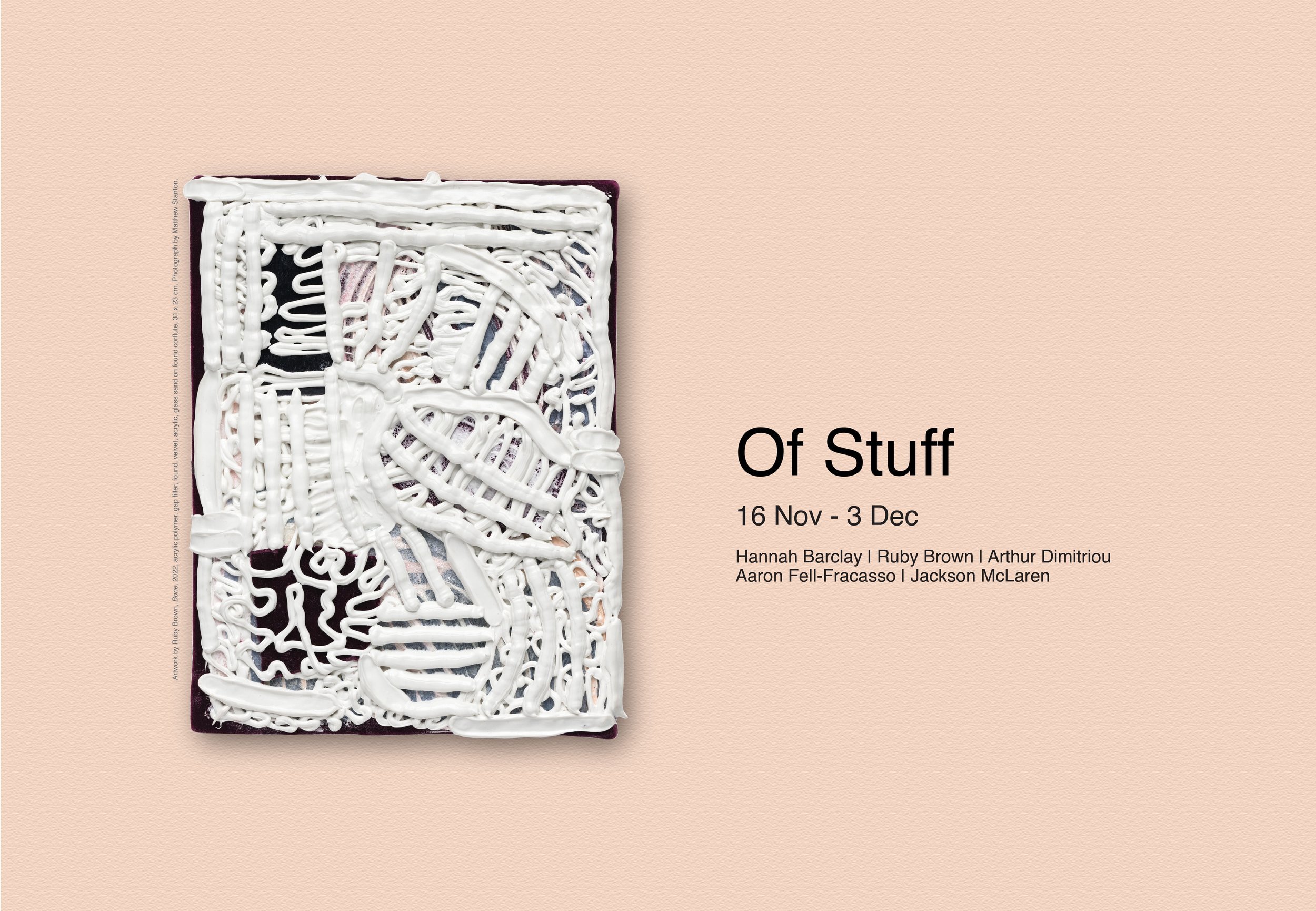
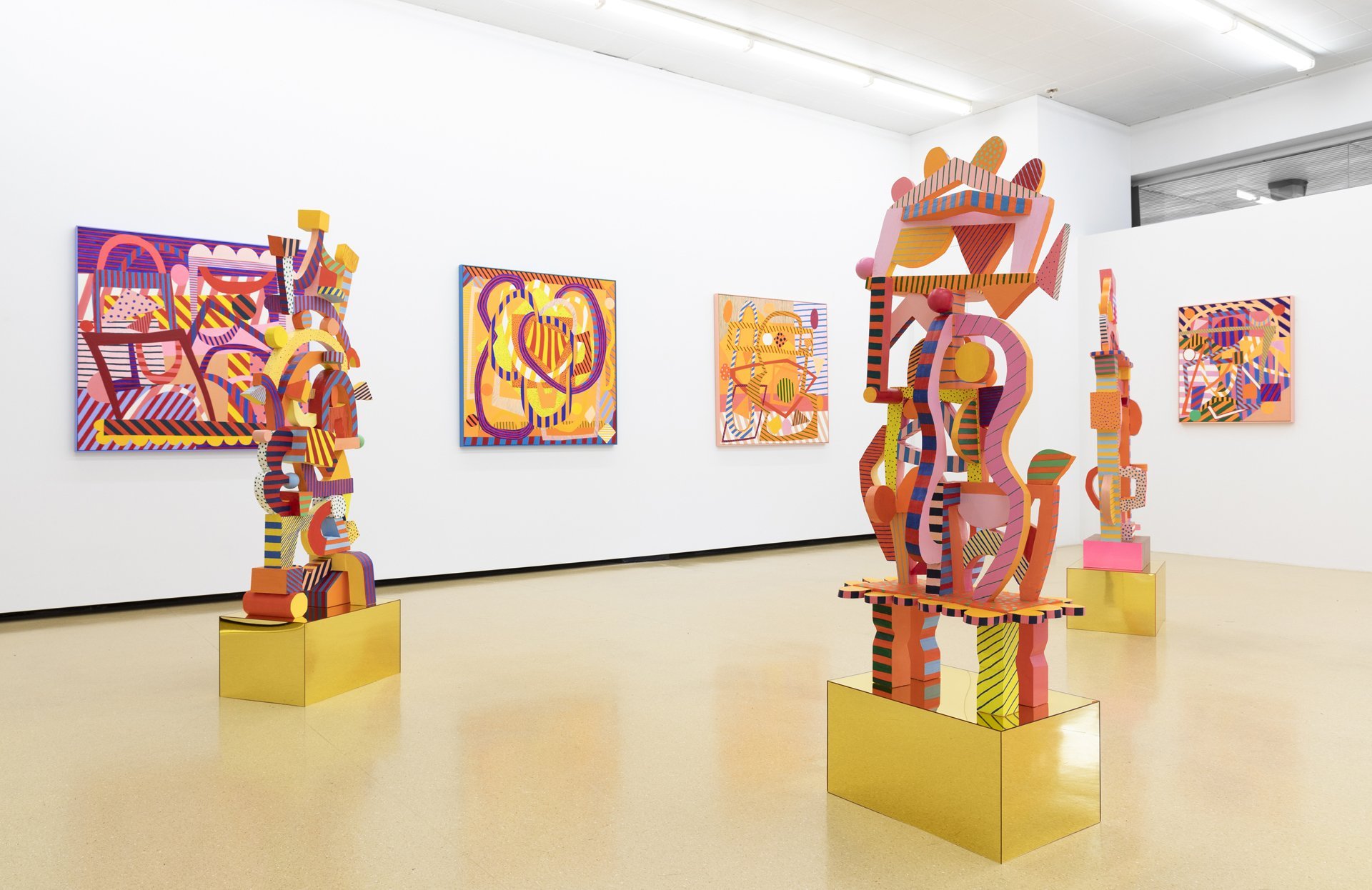
JULIA FLANAGAN | PARADISE CIRCUS
Like the looping lines that circuit her work, Julia Flanagan’s paintings and sculptures are intricately linked. Drawings may begin as plans for sculptures but then emerge as painting. Zoomed in sections of an earlier work establish a starting point for the new, before the introduction of dynamic ribbons in scintillating patterns.
The latest paintings play more intensely with all these layers. Formats based on the geometry of the quilting square (used by her mother) are a stable background. But with this anchor in place, curlicues then twist in front and around, at times weaving in and out like a needle in motion, a thread bouncing off or negotiating edges. These movements encourage us to then move similarly around the sculptures which Flanagan is now really turning up to the scale of the body. Elevated on specifically designed plinths, they address the standing figure but also speak of the hand, of construction in wood as well as in painting and drawing. The cut-out assemblages breathe into the space with their attuned negative shapes. They feel like aspects of the paintings that have been brought out into another dimension for reflection and clarity.
The Paradise Circus series started with sketches made last year while Julia Flanagan was immersed in home schooling. As she states, “That’s where these more open, layered paintings came from. I’ve done a stack of really little drawings. A painting might come from a sketch that would be half an A4, maybe smaller. They start off quite miniature mainly because I can do that quickly.”
To find shape, Flanagan looks to aspects of the everyday. To get started on drawing she might sit and look around her home studio and find forms from architecture and design that then shift through her generative drawing. One painting references a favourite chair. We might not locate the form of a chair in the final piece, but it offers a sensibility to establish a new compositional thing. Titles for work are similarly open, with references to music that connect tangentially and arise as the artist works.
In Paradise Circus there is delight and dynamism. Flanagan’s work is an extended exploration of visual pleasure but it is a tricky field that she constructs. Forces of wild linear patterns locate a joyous in-between tension, and then circle us back into the space of the body through sculptures that transcribe ovals to spheres and lines into rods and prisms.
In November 2022, Julia Flanagan is a finalist in the Fishers Ghost Prize. She won the Georges River Sculpture Prize in 2019 and has shown at Sydney Contemporary in 2020. Also in 2020, Flanagan collaborated with the Gorman (Textile and Fashion Design) brand. This is her third solo exhibition with The Egg & Dart.
Words by Melody Willis
